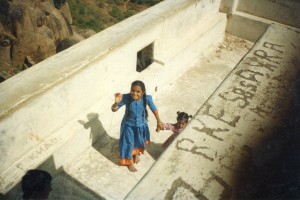A society’s cultural wealth is so deep that it even influences its people’s emotional patterns. You’d think that feelings are basic, but not so.
They often reflect ideas from ancient times. Come and explore the inner riches of emotions.
Many of ancient Greece’s and Rome’s key thinkers said that emotions should be controlled. Greeks valued moderation. They had a term, sophrosyne, which meant being in control of your feelings. It was the opposite of hubris (excess, overrunning boundaries). Both Plato and Aristotle said that people should feel things in moderation. Wild celebrations of Dionysus were seen with suspicion.
But many ancient Indians valued absorption in the emotion, and it became a central feature in theories of theater and painting.
Rasa is the main idea behind both art forms. This word means the juice of plants, and flavor in genera. It’s thus related to the idea of flowing freely. In drama it refers to the emotion that you feel when you watch a play.
Between 2,000 and 1,500 years ago, Bharatamuni classified 8 basic rasas: romantic, comic, heroic, pathetic, brutal, disgusting, terrifying and wondrous. We can note some cool things about this:
1. Ancient Greeks in Aristotle’s time didn’t classify disgust and wonderment as basic, but they did consider shame to be key. But the Greeks had a different network of ideas, which was focused on the small political state, the polis. Aristotle located the emotions that drama evokes within the community. The tragedian moves us with the feelings of people. We identify with their sufferings, and this makes us more sensitive, and better community members.
The circular amphitheaters that Greeks performed in reinforced this focus on the small community–people could watch all their fellow citizens as well as the stage. They gasped together when Oedipus entered after gouging out his eyes. They rocked with laughter when Aristophanes’ comedies lampooned specific people with obscene language.
2. But ancient Indians by Bharatamuni’s time located emotions in more metaphysical levels. The rasas are ideal types. Plays don’t imitate real life–gestures are stylized, and some are shown in temple sculptures. But a sensitive person can become absorbed in the feeling, and thus transported to a metaphysical levels of meaning.
The 10th century Kashmiri took this thinking farther when he added a 9th rasa, the abhuta. He saw it as the most important. It occurs at the end of the play, and it elevates the viewer into awareness of cosmic unity.
So the locus of feeling is not mainly in the community, but throughout the universe. Rasas flow from prime creation, and people share the same river of life when they feel.
Your emotions thus can reflect a cultural landscape as vast as anything that ancient Indians ever imagined. You can click on any of the links below to feel more wonderment over Indian or Western culture.





Comments on this entry are closed.